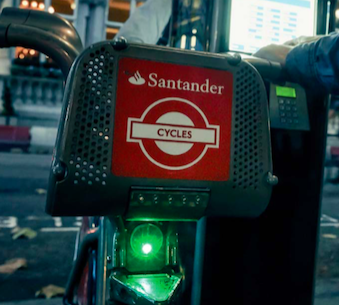Six years ago, the then-mayor of London Boris Johnson lobbied for the introduction of the first citywide cycle scheme to ever be introduced onto the bustling streets of the capital. With the aid of Transport for London, Serco, and significant support from Londoners, the hire system was officially implemented, changing the way people travel in the city. Fast-forward to the present day, and Santander’s bike scheme is doing extremely well. With a successful app launch under its belt and a new bike in development, head of operations at TfL David Eddington sat down with me to give his perspective on the past, present and future of Santander bikes.
There’s some confusion surrounding the origins of the London cycle scheme, could you clear that up for us?
The scheme started in 2010 under the direction of Boris Johnson as mayor. TfL followed that lead and created the service on his request. Some people believe that it was under Mayor Livingstone, but certainly, it was Boris who drove it forward into fruition. We went live on July 31st 2010, and we introduced the casual hire December of that year.
What key elements defined the success of the scheme?
We’ve been running for six years now, and we’ve amassed 53 million hires. When we went live I wasn’t sure that Londoners would take to it or not. The only reference we had was the Paris scheme, which had massive problems with theft and vandalism. In fact, it lost almost 90 per cent of its bikes in the first year, so we knew that ensuring that the bikes were secure would be an essential element of our own scheme’s success. We needed to keep its integrity; if people thought they could steal the bikes readily, then the whole scheme would have fallen over.
How many docking stations are currently in London?
As of right now there are 785 docking stations around the city. That makes just short of 22,000 docking points.
What system was put in place to evenly distribute the bikes?
Serco is contracted to operate the scheme for us. They have software packages that they use to run the numbers and basically guide their drivers to the stations in the mornings and take the bikes to places of high demand. It’s a constant challenge. It’s the greatest challenge that we have. At the end of the day, people just want to hire a bike and return it somewhere convenient.
What are the main benefits of membership?
You sign up once, you give your details once, and then you can go up straight away and unlock a bike. You don’t have to mess around with the terminal at all. You go straight to a dock and release a bike. We have 24-hour membership, which starts at £2, or an annual membership, which is £90.
What is the length of the average journey undertaken on a Santander bike?
We don’t have GPS trackers, so we know where a journey starts and ends, but we have no way of knowing where the rider has been in between. The average journey time for a member is around 15 minutes, but what’s more encouraging for TfL is that casual hires are at around 32 minutes in length, meaning that people are cycling for a significant period of time.
You recently released a mobile app, how has it been received by the public?
The app is really exciting for us. It’s the latest technology; more and more people are using it every day. It allows people to hire a bike without a key, and about ten per cent of our hires now come through the app. It’s also used a lot for checking to see availability, which is extremely useful for commuters.
How did Pashley win the contract for the next generation of Santander bikes?
We announced the plan and companies put in bids – each one presented different options and also a different bike. We evaluated value for money, and efficiency, and Serco was successful in winning the bid. They subcontracted the bike production to Pashley.
Serco, working with Pashley, was able to identify some of the common areas that needed improvement. These include accessibility of parts for easy repairs and maintenance, and updates to the lighting system. From a customer perspective, people commented that the bike is a bit heavy and it may be difficult to manoeuvre; with the new bike we’re using 24” wheels and a smaller frame that is 2kg lighter. We’re hoping that it’s going to encourage people who don’t currently use Santander bikes to have a go.
And when will the public see the new bikes?
The public will see those in operation by early 2018, and the plan is that we will replace the older, worn-out bikes as they come in, at around 500-600 bikes per year.
Brighton recently announced plans for a cycle scheme, do you think that this trend will continue across England?
Very much so. The first UK national bike share meeting was held yesterday, so there were various cities there. As you say, Brighton was there, Manchester is gearing up to assess bidders for their scheme, Reading, Slough, and Glasgow have their own schemes. Cycle share is definitely very much on the up.
Do you think that London provides a good example of how cycle schemes can work?
I’m not arrogant enough to say it’s perfect, but the proof is there – 53 million hires since we started. People wouldn’t use a scheme that didn’t work. We’ve learned lots of lessons that we really feel like people will benefit from. Even simple things like the location of docking stations, which is key to a successful scheme. We have a wealth of knowledge that we’re more than happy to share with other cities.
 BikeBiz Bicycle and cycling retail news
BikeBiz Bicycle and cycling retail news




